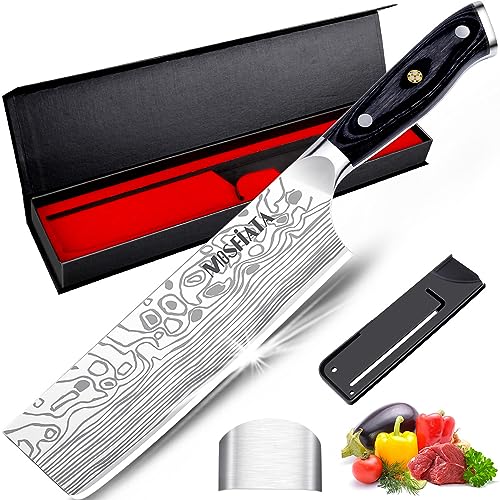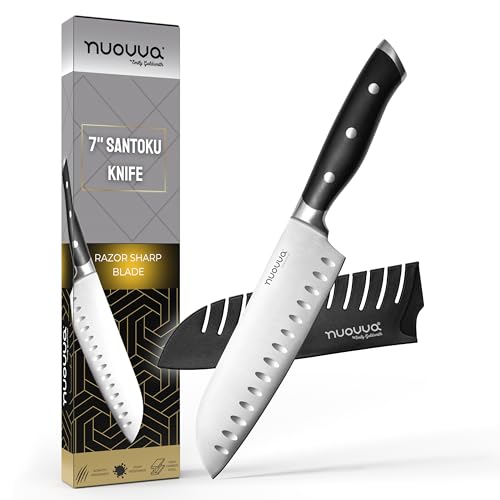Understanding Chef’s Knives: The Essential Kitchen Tool
The Importance of a Chef’s Knife
A chef’s knife is often considered the cornerstone of any kitchen. It’s versatile enough to handle various tasks, from chopping vegetables to slicing meats. Imagine being in your kitchen, preparing dinner; instead of reaching for multiple knives, a well-balanced chef’s knife effortlessly tackles all your slicing, dicing, and mincing needs. This tool is designed to be an extension of your hand, allowing you to practice precision and efficiency.
Types of Chef’s Knives
There are many types of chef’s knives available, but they commonly come in two styles: Western and Japanese. Western chef’s knives typically have a broader blade and are heavier, providing stability and strength during tough cuts. Japanese knives, on the other hand, are generally lighter and sharper, making them ideal for fine slicing. Knowing the difference can help you decide which style suits your cooking habits and preferences.
Key Features to Consider When Buying a Chef’s Knife
Blade Material
When purchasing a chef’s knife, the blade material is a crucial factor. Stainless steel blades are resistant to rust and stains, making them a popular choice for everyday use. High-carbon steel blades hold their edge exceptionally well and can be sharpened to a fine point but require more care to prevent rusting. We suggest considering how much effort you want to invest in maintenance versus performance.
Blade Size and Shape
Chef’s knives typically range from 15cm to 30cm in length. A 20cm blade is a common choice for versatility, offering sufficient length for most tasks without being unwieldy. The shape of the blade will also determine its suitability— a curved blade allows for a rocking motion when chopping, while a flatter blade is better for slicing. Evaluate your cooking style to find the size and shape that feels most comfortable in your hand.
Handle Comfort and Grip
A knife’s handle is just as important as the blade itself. A good handle should feel secure and comfortable in your hand, allowing for extended use without strain. Look for handles made from materials such as wood, plastic, or composite; each provides a different grip and feel. Test out various options to see which one fits naturally and ergonomically in your grip.
The Best Chef’s Knives for Every Budget
Budget Options
If you’re just starting out or on a tight budget, there are several solid chef’s knives available that won’t break the bank. Brands like Victorinox and Mercer have excellent entry-level options. They are durable, perform well, and feature comfortable handles that make them great for everyday chopping tasks.
Mid-Range Choices
For those willing to invest a bit more, mid-range knives such as Wüsthof and Henckels offer enhanced quality and performance. These knives often feature better construction, allowing for improved balance and stability, which can significantly enhance your cooking experience. The slight increase in cost means greater longevity and a more enjoyable cutting experience.
Premium Options
If you’re passionate about cooking and might want to invest in a high-quality tool, consider brands like Shun or Global. These are Japanese-style knives known for their exceptional sharpness and longevity. A premium knife can be a joy to use, providing precision and ease in your culinary tasks. Though they come at a higher price point, the investment can pay off through repeated use and the enhancement of your cooking skills.
Caring for Your Chef’s Knife: Maintenance Tips
Regular Care Practices
To keep your chef’s knife performing at its best, regular maintenance is essential. Always wash your knife by hand immediately after use to prevent damage that can happen in the dishwasher. Use mild detergent and warm water, then dry it thoroughly to prevent rusting. Avoid leaving your knife wet for extended periods, as moisture can deteriorate the blade and handle.
Sharpening Your Knife
Sharpening is key to maintaining a chef’s knife. We recommend using a whetstone for the best results; it allows you to achieve the desired sharpness while also being a rewarding skill to learn. Regular honing with a honing steel before or after use can also help maintain the edge between sharpenings, making tasks smoother and safer.
Enhancing Your Culinary Skills with the Right Knife
Mastering Techniques
Using the right chef’s knife can make a world of difference in your culinary training. The ease of slicing and dicing contributes significantly to speed and efficiency in the kitchen. With practice, you’ll find that a well-balanced knife allows for more controlled cuts, helping you master techniques such as the julienne or chiffonade with confidence.
Building Precision and Confidence
Having a dependable chef’s knife not only speeds up your cooking but also builds your confidence in the kitchen. Whether you’re a novice or an experienced chef, wielding a knife that feels right in your hand enhances your ability to experiment with flavours and presentation. As you grow more comfortable with your knife skills, you’ll find yourself exploring new cuisines and cooking methods, furthering your culinary journey.




























